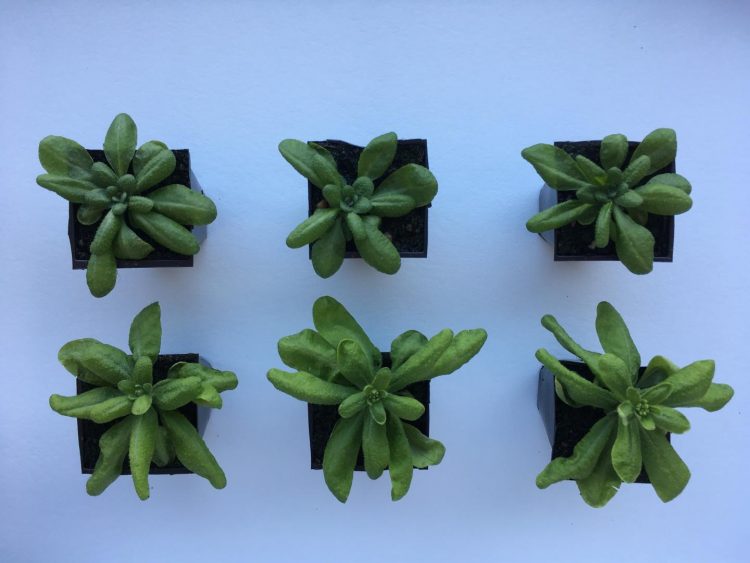Genetics may lie at the heart of crop yield limitation

Comparison of growth differences in wild-type (left) and growth-repressor mutant (right) Arabidopsis plants. Credit: Dr Nick Pullen
“This could have potentially big implications for the agricultural industry,” says Dr Pullen, “Our model plant is in the same family as cabbages, so it's easy to imagine creating giant cabbages or growing them to the desired market size faster than at present.”
It was previously assumed that plant growth was generally resource-limited, meaning that plants would only grow as large and fast as they could photosynthesise.
However, Dr Pullen and his team present evidence that plant growth is actually “sink-limited”, meaning that genetic regulation and cell division rates have a much bigger role in controlling plant growth than previously thought:
“We are proposing that plant growth is not physically limited by Net Primary Productivity (NPP) or the environment, but instead is limited genetically in response to these signals to ensure they do not become limiting.”
By genetically altering the growth repressors in Arabidopsis, Dr Pullen and his team were able to create mutant strains. They identified the metabolic rates of the different plant strains by measuring rates of photosynthesis and respiration, as well as comparing the size and weight of the plants to monitor differences in physical growth.
Dr Pullen and the team also grew the mutant plant strains at different temperatures to see if this changed their results: “When grown at different temperatures we still find a difference in size of our plants between wildtype and the mutants. This suggests our results should be applicable in different climates.”
The impact of these results is wide-reaching, and Dr Pullen suggests that it may even change how we think about global climate data: “Climate models need to incorporate genetic elements because at present most do not, and their predictions would be much improved with a better understanding of plant carbon demand.”
Media Contact
All latest news from the category: Life Sciences and Chemistry
Articles and reports from the Life Sciences and chemistry area deal with applied and basic research into modern biology, chemistry and human medicine.
Valuable information can be found on a range of life sciences fields including bacteriology, biochemistry, bionics, bioinformatics, biophysics, biotechnology, genetics, geobotany, human biology, marine biology, microbiology, molecular biology, cellular biology, zoology, bioinorganic chemistry, microchemistry and environmental chemistry.
Newest articles

Properties of new materials for microchips
… can now be measured well. Reseachers of Delft University of Technology demonstrated measuring performance properties of ultrathin silicon membranes. Making ever smaller and more powerful chips requires new ultrathin…

Floating solar’s potential
… to support sustainable development by addressing climate, water, and energy goals holistically. A new study published this week in Nature Energy raises the potential for floating solar photovoltaics (FPV)…

Skyrmions move at record speeds
… a step towards the computing of the future. An international research team led by scientists from the CNRS1 has discovered that the magnetic nanobubbles2 known as skyrmions can be…





















